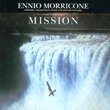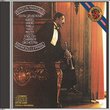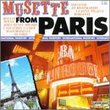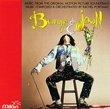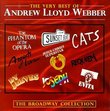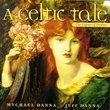| All Artists: Roy Whelden With Carl Friedrich Abel Title: Galax Members Wishing: 0 Total Copies: 0 Label: New Albion Records Release Date: 11/18/2009 Genre: Classical Styles: Chamber Music, Historical Periods, Classical (c.1770-1830), Instruments, Strings Number of Discs: 1 SwapaCD Credits: 1 UPC: 022551005921 |
Search - Roy Whelden With Carl Friedrich Abel :: Galax
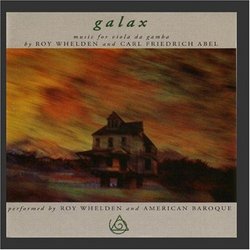 | Roy Whelden With Carl Friedrich Abel Galax Genre: Classical
Galax by Roy Whelden With Carl Friedrich Abel |
Larger Image |
CD DetailsSynopsis
Album Description Galax by Roy Whelden With Carl Friedrich Abel Similarly Requested CDs
|
CD ReviewsCuriously refreshing. With a touch of Friesen and Meyer. Bob Zeidler | Charlton, MA United States | 03/24/2001 (5 out of 5 stars) "I must confess that I am basing this review on a borrowed copy of Roy Whelden's "Galax," loaned to me by a friend. But this is such an interesting album that I feel compelled to write these words earlier rather than later. And I hasten to add that my own copy is already on order. The viola da gamba was the immediate predecessor of the modern cello. Often utilized in "authentic instrument" performances of Renaissance and Baroque music, and of course in solo music for which it had been specifically written, the instrument does not have quite the sound projection qualities and sonorous resonance of the modern cello (which were a natural outgrowth of the efforts of Stradiveri, Guarneri, Amati and others of the Cremona era). But it does appear to have one unique, peculiar advantage over the cello, an advantage that must be related to a difference in bridge design. The bridge, for those not familiar with instruments of the viol and violin families, not only serves the purpose of transmitting string vibrations to the instrument body and soundpost, but also affects the ease with which "multple stops" - chords on two or more strings - can be played, depending on how steeply or flatly it is curved. It would appear that a viola da gamba bridge is measurably flatter than a cello bridge, simplifying the generation of multiple stops. And Roy Whelden takes full advantage of this ability of the viola da gamba in several of the selections in this album, particularly those coming from his own pen. Carl Friedrich Abel (1723-1787) was a contemporary of, and collaborator with, Johann Christian Bach. Together, they strived to maintain awareness of the instrument, in the face of its quickly being replaced in this early Classical period by the cello, with new compositions for the instrument and through a series of concerts (the Bach-Abel series, in London). Abel was also reputed to be a legendary improvisor on the instrument, and that's where my interest really kicks in. String instrument improvisation just "gets to me" and seemingly brings me alive. Using authentic instruments, Whelden and the American Baroque do a fine job on Abel's Gamba Quartet, in which the middle movement is swapped, even-up, for one by Whelden from his "Quartet after Abel." Very nicely done. But on to the main course: Whelden's own music, performed of course by him. He notes that his compositions have had several influences, including minimalism, serialism and Appalachian fiddle music. The opening track, "Twin Rows," is claimed by Whelden to use techniques drawn from minimal music. I hear, instead, an early-instrument improvisation that might well have been performed by Eugene Friesen, a cello improvisor of more than a little reknown. While not quite the "bow shredder" that Eugene can be, Roy Whelden does have the advantage of the flatter bridge of the viola da gamba, and makes full use of it in putting together a piece loaded up on multiple stops very cleanly done. I must say I liked it, and wonder aloud if Eugene Friesen is aware of this seeming counterpart. "Prelude and Division on `She's So Heavy'," a Beatles tune, and "Fanfare," an improvisation incorporating serialism in a way that is not likely to offend those who are put off by the whole idea, are whimsy personified in both title and execution. "Galax," according to Whelden, is named after a town in Virginia having the most famous fiddle festival on the East coast. He may as well have called it "Edgar" or "Meyer," for the first thought that pops into my mind is the improvisational work of that extraordinary bassist. Without a doubt, my favorite track on the album. Followed closely enough by "Twin Rows." A bit of Friesen and a bit of Meyer, both on viola da gamba, all in a day's work. And, I must say, a very good day's work at that. If you can connect to Edgar or Eugene, give Roy a try. Bob Zeidler" Varied Viola da Gamba Daniel G. Berk | West Bloomfield, Michigan | 09/08/2000 (4 out of 5 stars) "One does not frequently hear viola da gamba compositions actually played on that instrument itself, as opposed to the cello, which is the usual substitute. In that respect, this CD is a real treat, and Roy Whelden certainly has command of the instrument.The compositions by Carl Friedrich Abel (1723-1787) are beautiful; his works are not heard often enough. If one is fond of the baroque period, but is not familiar with Abel, here is an opportunity to remedy that situation.With respect to Whelden's own compositions, the idea of contemporary works for an ancient instrument is an interesting juxtaposition."
|

 Track Listings (12) - Disc #1
Track Listings (12) - Disc #1